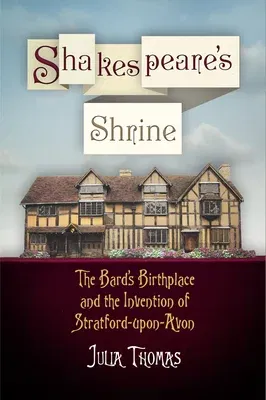Anyone who has paid the entry fee to visit Shakespeare's Birthplace on
Henley Street in Stratford-upon-Avon--and there are some 700,000 a year
who do so--might be forgiven for taking the authenticity of the building
for granted. The house, as the official guidebooks state, was purchased
by Shakespeare's father, John Shakespeare, in two stages in 1556 and
1575, and William was born and brought up there. The street itself might
have changed through the centuries--it is now largely populated by gift
and tea shops--but it is easy to imagine little Will playing in the
garden of this ancient structure, sitting in the inglenook in the
kitchen, or reaching up to turn the Gothic handles on the weathered
doors.
In Shakespeare's Shrine Julia Thomas reveals just how fully the
Birthplace that we visit today is a creation of the nineteenth century.
Two hundred years after Shakespeare's death, the run-down house on
Henley Street was home to a butcher shop and a pub. Saved from the
threat of an ignominious sale to P. T. Barnum, it was purchased for the
English nation in 1847 and given the picturesque half-timbered façade
first seen in a fanciful 1769 engraving of the building. A perfect
confluence of nationalism, nostalgia, and the easy access afforded by
rail travel turned the house in which the Bard first drew breath into a
major tourist attraction, one artifact in a sea of Shakespeare
handkerchiefs, eggcups, and door-knockers.
It was clear to Victorians on pilgrimage to Stratford just who
Shakespeare was, how he lived, and to whom he belonged, Thomas writes,
and the answers were inseparable from Victorian notions of class,
domesticity, and national identity. In Shakespeare's Shrine she has
written a richly documented and witty account of how both the Bard and
the Warwickshire market town of his birth were turned into enduring
symbols of British heritage--and of just how closely contemporary
visitors to Stratford are following in the footsteps of their Victorian
predecessors.

